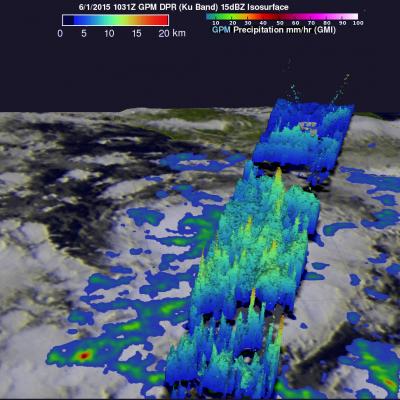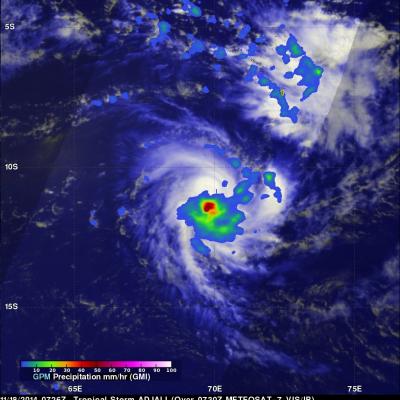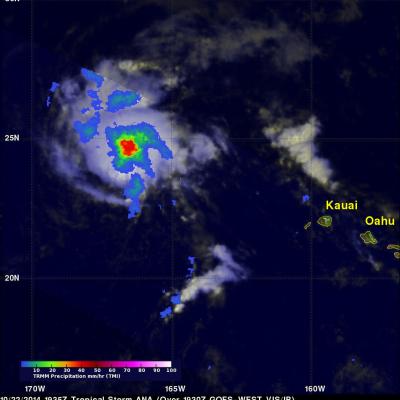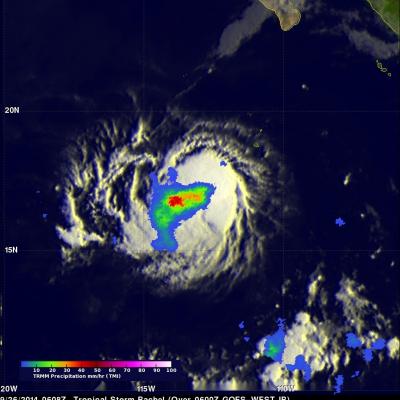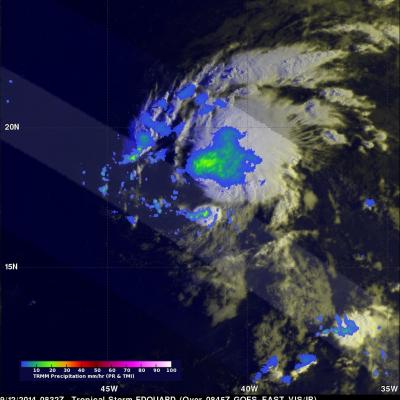GPM Passes Over New Tropical Storm Blanka
Today a new tropical storm called Blanka formed in the eastern Pacific Ocean off southwestern Mexico. The GPM core observatory satellite flew over the forming tropical storm on June 1, 2015 at 1031 UTC (5:31 AM CDT). Rainfall data collected by GPM's Microwave Imager (GMI) and Dual-Frequency Precipitation Radar (DPR) instruments are shown The location of Blanka's center of circulation within a large area of convective thunderstorms was clearly outlined by GPM's GMI derived rainfall. A 3-D view derived from DPR's Ku Band radar data shows that several areas of intense rainfall were located east


